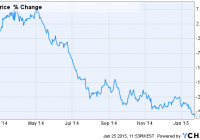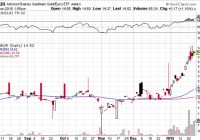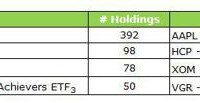Cotton Continues Its Bounce Along The Bottom
Summary Prices over the last several months have trended lower. Petroleum prices will continue to put downward pressure on cotton. The 2015 U.S. planting season begins in mid-March. Introduction During my last article, the 2015 outlook for cotton , I remained somewhat optimistic that this commodity would find a bottom. Even given that assessment, I recommend that you avoid iPath Dow Jones-UBS Cotton Total Return Sub-Index ETN (NYSEARCA: BAL ). That assessment has again proven to be correct. Let’s take a look at the past years performance: Article Date Recommendation Closing price for BAL 7/18/2014 Avoid 45.65 9/26/2014 Avoid 41.35 Table created by Nathan Buehler As of market close on 1/23/2015, BAL is trading at $39.02 per share. 2015 planting season My outlook last year was that U.S. farmers would choose other, more profitable crops to plant, instead of cotton. This, so long as the downward trend in prices continued. The downward trend has continued and we are now nearing 2015 planting decisions. Below is a good read supporting my position: Agweb.com: 2015 Outlook: Get Ready for a Cotton Crop Swap? Other recent developments, such as the drop in corn prices due to lower oil, have me revisiting this topic. Many other agricultural commodities, not just cotton, have come under pressure recently due to the drop in oil. See the upcoming events below for more insight. Upcoming events Several events in February bear watching. The National Cotton Council will release results of U.S. cotton producers’ survey on February 7th. Per their website, they are expecting a decline in acreage for the 2015/2016 planting season. On February 20th, the USDA will release preliminary estimates on everything from trade to production of cotton. You can view their currently released data here . These events are very important. Both will shed light on what farmers are thinking for 2015. If other crops are seeing the same margin pressures as cotton, we could see farmers hold the line. Even with this sector’s pressures, I see a significant decline in acreage for cotton in the U.S. Supply (click to enlarge) Chart retrieved from Cotton Inc. on 1/26/15 Supply continues to run higher than demand adding to global stocks. Global stocks-to-use are at all-time highs thanks to China’s reserve policies. During the past articles we discussed how technological advances in India have pushed their yield per acre up significantly over the past decade. India is now poised to overtake China as the number one cotton producer in 2015. Will India reduce acreage in 2015? Analysts are saying yes. China continues to have significant stocks and is sticking to its import quota to promote domestic demand. Current reports show that Chinese farmers are predicted to plant 15% less acreage of cotton in 2015. The Delta Farm Press is reporting that globally, acreage could decline about 10%. I recommend a read of their article here . It highlights many global points on production, including the water situation in Australia. Demand On the other side of the coin, demand for cotton has remained relatively steady. (click to enlarge) Chart retrieved from Cotton.org and based on estimates from the World Agricultural Outlook Board of USDA. 1/26/2015 Global economic news over the past several months has not been positive. China has continued to post lower than expected growth. Europe has announced several additional stimulus measures to prop up regional growth. The IMF has revised global growth down to 3.5%. None of these developments are a buy signal for cotton and put further downward pressures on its price. China could be experiencing problems with its reserves. Several mills have reported quality problems. I encourage you to read this article which goes into greater detail on the situation. Should this develop into a larger problem, it could cause a short-term spike in prices. Oil/Polyester Oil is a direct competitor of cotton through polyester. Polyester prices have followed the decline in oil, though not as drastically. Cotton prices have remained depressed and I don’t see the drop in oil as being a huge negative for cotton. If anything, consumers could see more disposable income which could boost demand for cotton products. Chart retrieved from: link I found the below chart interesting and wanted to share: Conclusion To prevent redundancy, as your time is valuable, I have tried to include many links to good reads in this article. February will be a foundational month for cotton futures. Are we going to put a floor or ceiling on prices? After analyzing the supply and demand data, preliminary production outlook, and the possible quality problems in China, I see cotton putting in a floor in February. I am changing my avoid rating of BAL to neutral. I personally believe better opportunities exist in the market right now outside of cotton. For the remainder of 2015, I am looking for oil to be the best performing commodity. This is always dependent on the economic outlook and the stimulus measures in Europe taking hold. I sincerely thank you for reading and I hope this article helps you in your investing decisions.


